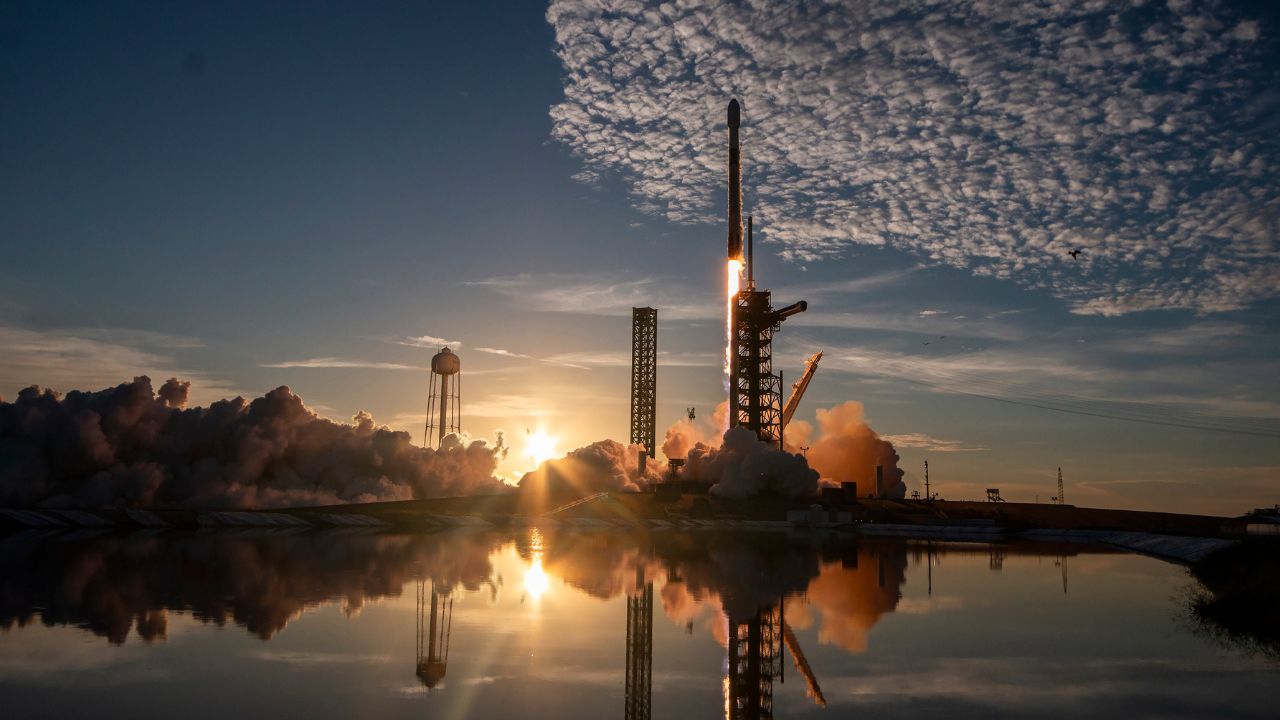Beyond the ISS: A Unified Vision for Crewed and Uncrewed Platforms

NASA's SpaceX IMAP Liftoff
By Francisco Córdova, Chief Operating Officer for the ISS National Lab
September 29, 2025
This piece is part of our Forging the Path series in which CASIS® experts and partners share knowledge and insight on managing a national lab in space.
Francisco Córdova serves as Chief Operating Officer for the ISSInternational Space Station National Laboratory, the world’s premier space-based research facility, where he leads a team that is shaping the future of research in space and is working with commercial partners to establish a robust and sustainable low Earth orbit(Abbreviation: LEO) The orbit around the Earth that extends up to an altitude of 2,000 km (1,200 miles) from Earth’s surface. The International Space Station’s orbit is in LEO, at an altitude of approximately 250 miles. economy.

As the International Space Station (ISS) enters the twilight of its service, the global space community faces a pivotal question: What comes next? The answer, we believe, lies not in choosing between crewed and uncrewed platforms, but in embracing the power of both. At the ISS National Laboratory®, we’ve witnessed firsthand how this synergy propels science, technology, and economic development forward in ways that benefit humanity far beyond what is possible on Earth.
Like in any laboratory, some ISS experiments require human interaction and engagement. For example, astronauts have been critical in executing complex hands-on research on cell tissues and muscle atrophy, while uncrewed platforms have shown success in automated crystal growth for enhanced drug delivery. Similarly, astronauts have tested groundbreaking technologies for 3D printing human tissue and manufacturing advanced optical fiber—tools that require human troubleshooting and iteration in orbit. However, once validated, those same systems could be scaled and stress-tested on uncrewed platforms, where they could operate continuously at lower cost.
Together, crewed and uncrewed platforms create a feedback loop where human engagement accelerates innovation while automation ensures scalability, unlocking breakthroughs that neither could achieve alone.
The ISS has served as the backbone of low Earth orbit (LEO) research for more than two decades. Investments through this platform have led to a host of discoveries and valuable new technologies, from advanced water purification systems and precision farming tools to remote medical diagnostics and improved therapeutics for a wide range of conditions. These breakthroughs underscore why continued investment in space is not a luxury, it’s a necessity. Every dollar spent up there comes back multiplied through innovation down here.
As we look to a post-ISS era, maintaining this upward momentum means evolving our approach. LEO is no longer solely the domain of governments. A growing number of commercial entities are now shaping what is quickly becoming a robust LEO economy. In this new landscape, both crewed and uncrewed platforms will play distinct yet complementary roles.
Uncrewed systems, particularly smaller autonomous research modules, offer an ideal test bed for proof-of-concept technologies. They can be deployed quickly and inexpensively, allowing for rapid iteration of experiments. This agility is crucial for early-stage R&D in fields such as biotechnology, crystal growth for pharmaceuticals, materials science, and advanced manufacturing.
Larger uncrewed platforms, on the other hand, will become essential for scaling up production of high-value goods that benefit uniquely from microgravityThe condition of perceived weightlessness created when an object is in free fall, for example when an object is in orbital motion. Microgravity alters many observable phenomena within the physical and life sciences, allowing scientists to study things in ways not possible on Earth. The International Space Station provides access to a persistent microgravity environment. but may pose risks too great for crewed environments. Semiconductor fabrication, high-temperature alloy development, and large-scale robotics are just a few promising areas. In microgravity, these processes can achieve precision and purity unattainable on Earth.
But automation alone cannot replicate the unique capabilities of the human mind. Crewed platforms remain indispensable for experiments requiring real-time decision-making, troubleshooting, and complex manipulation of scientific equipment. We’ve seen this on the ISS time and again, from complex fluid physics investigations to studies using tissue chips that mimic human physiology. Astronauts have acted not just as caretakers but as active participants in science, often adjusting protocols mid-experiment to preserve results that would otherwise have been lost.
The next generation of orbital infrastructure should build on these lessons. Crewed platforms should serve as command hubs, innovation incubators, and hands-on laboratories, while uncrewed platforms extend reach, minimize risk, and expand throughput.
A sustainable, productive future in space demands that we stop viewing crewed and uncrewed missions as rivals. Instead, we must recognize them as partners—a two-pronged strategy for maximizing impact and unlocking the full potential of the LEO economy. The road beyond the ISS isn’t a fork. It’s a runway, and we need every kind of engine to launch what comes next.
But to get to that future, there must be a consistent and strategic approach to government support and investment in LEO. The LEO economy is growing and shows strong potential to become self-sustaining; however, it is not there yet. Government investment is still critical, not only to establish foundational infrastructure but also to de-risk early private investments and fuel the fundamental research that will underpin future high-value technologies, including those that will take us to Mars and beyond. Without this support, the ecosystem could stall before reaching escape velocity.
We stand on the brink of a new era in human history, one where space is no longer a distant frontier, but an accessible extension of our working environment, fueling discovery, innovation, and economic growth. Crewed and uncrewed platforms together will serve as the foundation for this future, enabling breakthroughs in manufacturing, national security, and exploration. Orbital factories will produce materials and components that are impossible to create on Earth safely and sustainably, without burdening our planet’s environment. Automated space-based assembly of larger infrastructure will accelerate humanity’s push outward, from the Moon to Mars and beyond.
The twilight of the ISS is not the end of an era but the dawn of an even greater one. The choice before us is simple: lead boldly, or watch others seize the initiative. For the past 50 years, America has defined the frontier of space. Now is the time to ensure we lead for the next hundred.